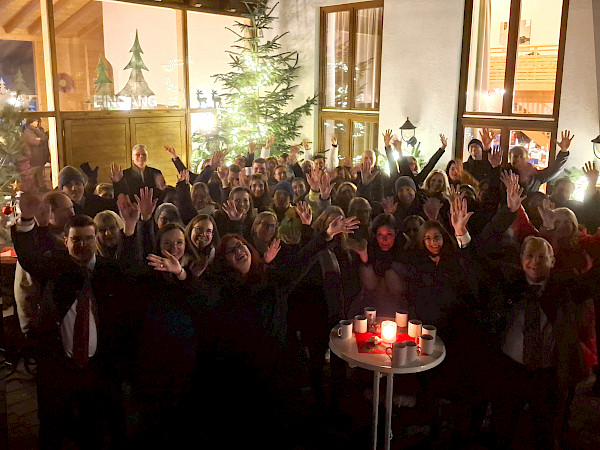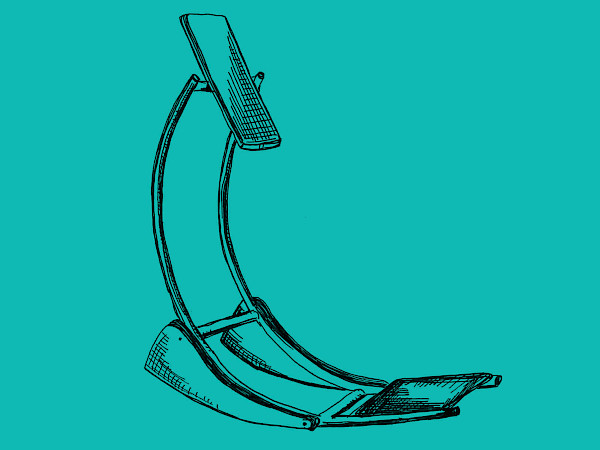Flasher – All-in-one high-tech wearables for cyclists and e-scooter riders with gesture-controlled turn signals, automatic emergency brake light and position light
21.09.2022
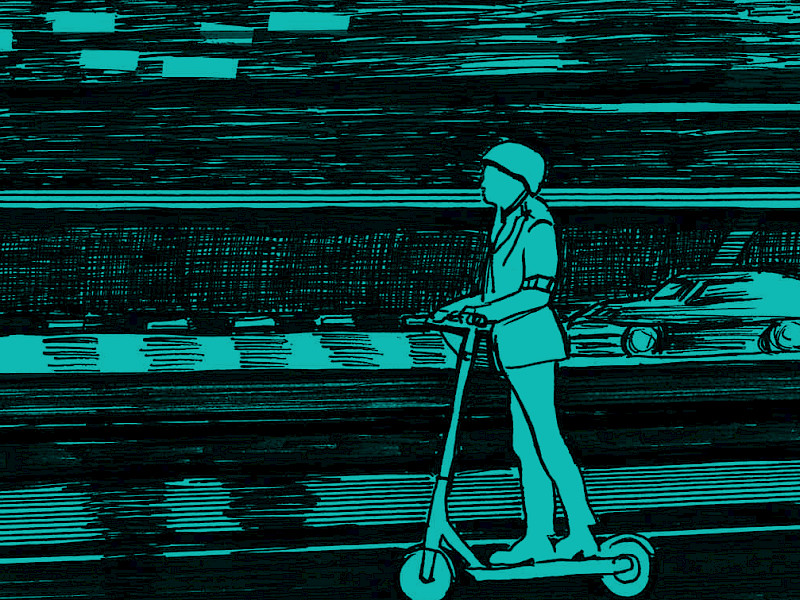
Shark Tank of Patents
In season 12, episode 4, of the TV show "Die Höhle der Löwen" (German version of the US show Shark Tank and the UK show Dragon's Den), a startup from Graz presents blinking light wristbands for cyclists called Flasher. The Flashers are designed to improve the safety of cyclists, e-scooter riders, runners and walkers. The illuminated wristbands are each strapped to the upper arms and operated via gesture control. For example, the wristbands flash when the user moves their arm(s), providing turn-by-turn directions. For this, the hands do not have to be taken off the handlebars, which ensures more control and thus safety for the user of the Flashers.
In addition to an Austrian patent already granted, an international patent application was filed for the Flasher, for which, at the time of drafting this text, only an international search report had been issued. On the basis of the Flasher, a way shall be shown how an effective delimitation to the prior art can look like, although it is not considered inventive by the search division.
Note: In most cases, the applicant is not aware of the entire relevant prior art before receiving a search report. Therefore, many applicants pursue the strategy of obtaining an opinion or overview of possibly conflicting prior art in a first search of a national office within the priority year, in order to decide on this basis whether the relatively high costs of subsequent patent applications based on the priority application in further regions/countries are worthwhile.
The International Patent Application –
WO2022082248A1 (WO'48)
Subject-matter of protection
Originally, an attempt was made to protect the Flasher with an independent claim 1 directed to a signaling device (cf. reference signs in parentheses from illustrated Figs. 1 and 3 of WO'48).
Claim 1 of WO'48 defines the following features:
M1: Signaling device (10) for generating a light signal when driving a vehicle, comprising
M2: an attachment portion (20) for reversible attachment to an upper arm of a driver of the vehicle; and
M3: a signaling element (30) having a plurality of signaling means (32) for generating the light signal, further comprising
M4: a control module (40) for controlling the signaling element (30) with at least one sensor element (50) for detecting gestures of the driver's upper arm,
M5: wherein the control module (40) further comprises a discriminating element (60) for discriminating the detected gestures of the driver's upper arm from driving movements of the driver while driving the vehicle.
Prior Art
In particular, the search report cites D1 (US 2018/304800 A1) and D2 (US 2015/366275 A1) as relevant for the claims of WO'48. Here, the search division considers claim 1 of WO'48 as anticipated by D1.
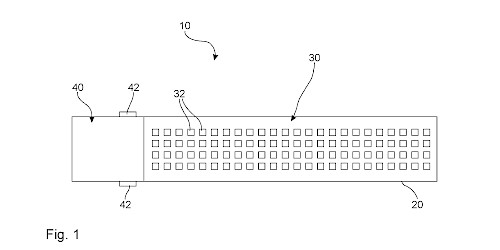
Fig. 1 – drawing from WO2022082248A1
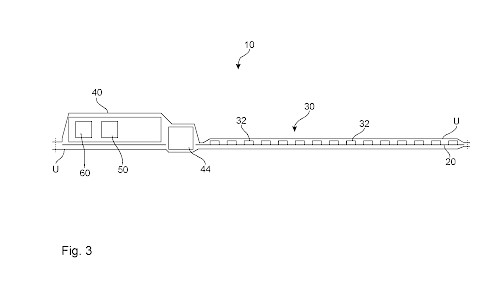
Fig. 3 – drawing from WO2022082248A1
Claim 1 – Lack of novelty over D1
(US 2018/304800 A1).
D1 discloses (cf. Figs. 2 and 4 of D1) a cycling garment 10 (cf. paragraph [0002] of D1; see M1). It is understood that the cycling garment 10 is intended for a cyclist to put on and take off (see M2). Indicator lights 18a and 18b are provided at respective distal ends of sleeves 14a and 14b (see M3). A controller 34 is operatively connected to the indicator lights 18a and 18b and the accelerometers 32a and 32b, and determines when to activate the appropriate indicator light 18a/18b (cf. paragraphs [0079] and [0080] of D1; see M4). Further, the cycling garment 10 has an accelerometer 32c that can be used, for example, to match the accelerometers 32a and 32b to filter out common movements of the accelerometers 32a, 32b, and 32c (cf. paragraphs [0024] and [0089] of D1; see M5).
Thus, the cycling garment 10 of D1 discloses all features M1 to M5 of claim 1 of WO'48.
Claim 1 of WO'48 is thus not novel over D1.

Fig. 2 – drawing from US 2018/304800 A1|
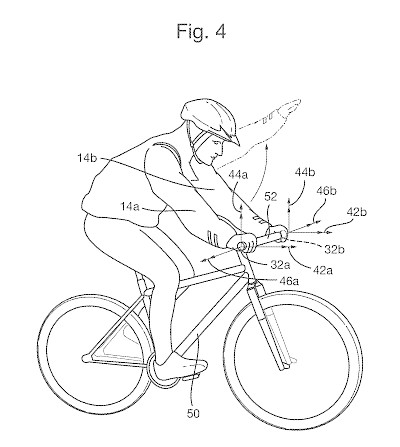
Fig. 4 – drawing from US 2018/304800 A1
Effective delineation
from the prior art
The following indicates one possibility in which we believe an effective delineation from the prior art could be achieved.
As an example, a combination of claims 1 and 2 of WO'48 could provide a useful delineation from D1. Claim 2 of WO'48 defines that "the attachment portion (20) is formed at least in sections as a springy snap lock".
In D1, the attachment portion is associated with one of the sleeves 14a or 14b.
Starting from D1 as the closest prior art, it does not make sense to have a snap-on device as a further development of the sleeves 14a/14b, nor for these to be springy in any way, as this would argue against the basic wearing comfort of such a cycling garment 10 as core idea of D1.
In principle, such a further development (claim 2 of WO'48) thus rather seems to lead away from this closest prior art (D1) and thus to speak for an inventive step of the same.
With respect to claim 2 of WO'48, the search report referred to D2.
Note: A document may be cited as relevant to the content of a claim. However, this merely represents the view of the search division and can often be refuted in the course of an analysis for novelty and inventive step.
D2 also relates to wearable signaling devices 11 for bicyclists, and has fasteners 15 and 16 that may be, for example, velcro fasteners or buttons (cf. paragraph [0033] of D2, and Fig. 1A of D2 as shown below). The adjustable strap 12 may be made of leather, nylon, plastic or other suitable materials.
Thus, the adjustable strap is not a snap-on device, nor do the materials used in the adjustable strap 12 have a springy characteristic as defined according to the wording of claim 2 in WO'48.
Consequently, apart from a motivation to combine D1 with D2, the skilled person also lacks the necessary teaching in D2 to arrive at the wording of claim 2 in WO'48 in an obvious manner.
That is, a combination of original claims 1 and 2 of WO'48 would not only be novel, but likely inventive over the prior art cited in the search report.
Note: The approach shown above is only one of many possibilities for delineation from the cited prior art. From the original application documents, there are other possibilities for delimitation, such as with regard to the charging possibility, the use of switches or the evaluation of the movements per se
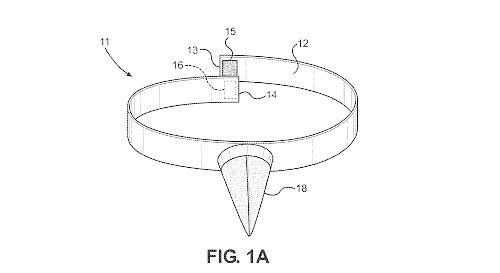
Fig. 1A – drawing from US 2015/366275 A1
Conclusion
It was shown how, by means of an allegedly non-inventive feature, an effective delimitation from the cited prior art could be achieved.
Specifically, it could be shown that a negative opinion on the inventive step of a feature says nothing about the objective evaluation of the feature or the totality of features of a claim, but merely reflects the view of the examiner (in the present case the search division). Very often it turns out that with the help of argumentative tools, such as the problem-solution approach, it can be shown that such a feature in fact contributes to an inventive step, even though this feature was perceived as self-evident in a first analysis by the examiner. These argumentative tools are the core competences of the patent attorneys at KUHNEN & WACKER – IP Law Firm in order to achieve the best possible protection for our clients in the end.
Disclaimer: The above contribution reflects the personal opinion of the author. The assessments and statements made in the article do not constitute legal advice and are provided under exclusion of any liability. If you need an assessment of an individual case, please contact the author and/or the law firm KUHNEN & WACKER.
Further news and
publications from K&W

Start Your Career at K&W
and Become Part of Our Team
Are you ambitious and flexible? Do you like to work independently and are prepared to take responsibility? If so, K&W is your place to be.
Our HR manager Elwine Kaschner looks forward to receiving your application.




